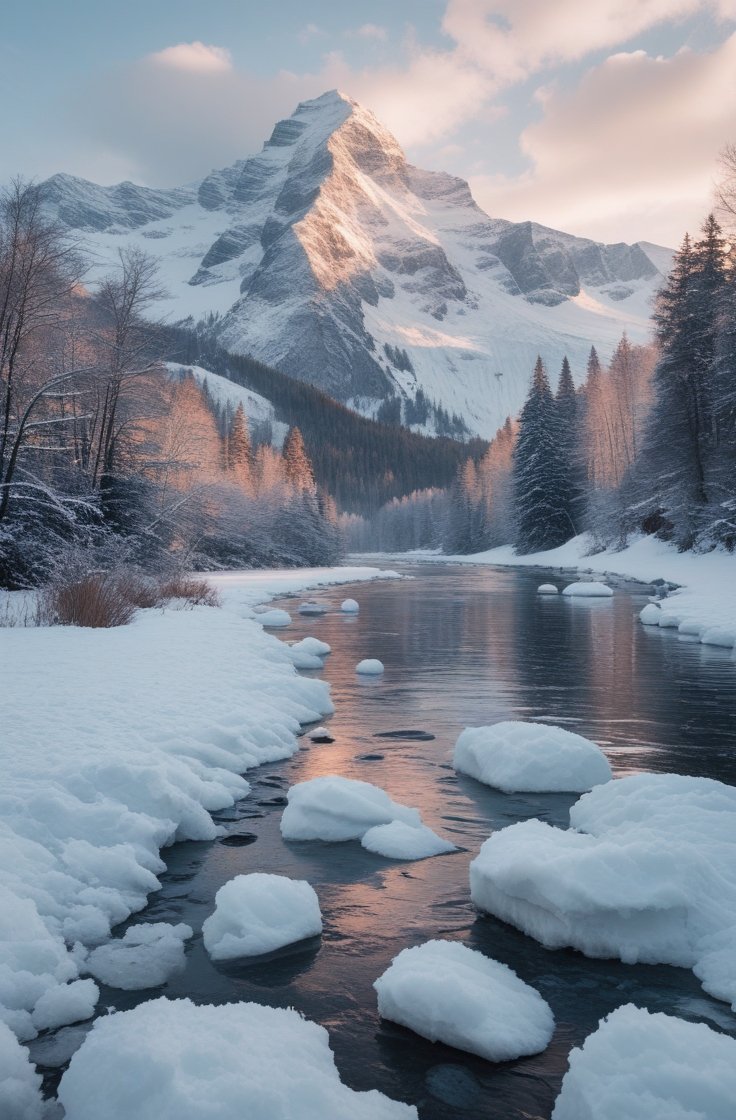Capturing the Serenity of Winter: A Journey Through a Snow-Covered Landscape
January 26, 2025 | by alwaled

Introduction to Winter Landscapes
The beauty and tranquility of winter landscapes offer a remarkable contrast to the vibrant scenes often associated with other seasons. As nature transforms into a wonderland blanketed with snow, it provides photographers with an opportunity to capture serene moments that evoke feelings of calmness and introspection. Winter scenery is distinctive, characterized by soft, muted tones and the delicate interplay of light and shadow that glistens on snow-covered surfaces. Each landscape presents a canvas painted in shades of white, gray, and the occasional hint of color from barren trees or distant hills.
Winter landscapes possess a unique ability to transmit emotions. A silent, snow-laden forest can evoke feelings of solitude and peace, while a bustling village dressed in white may elicit joy and nostalgia. This duality makes winter photography a compelling genre, where each image narrates a story of its own. The scenes captured during this season often highlight the stillness of life, drawing viewers into a realm where time appears to have paused. By focusing on the serene elements of winter, photographers can emphasize the beauty found in stillness, solitude, and simplicity.

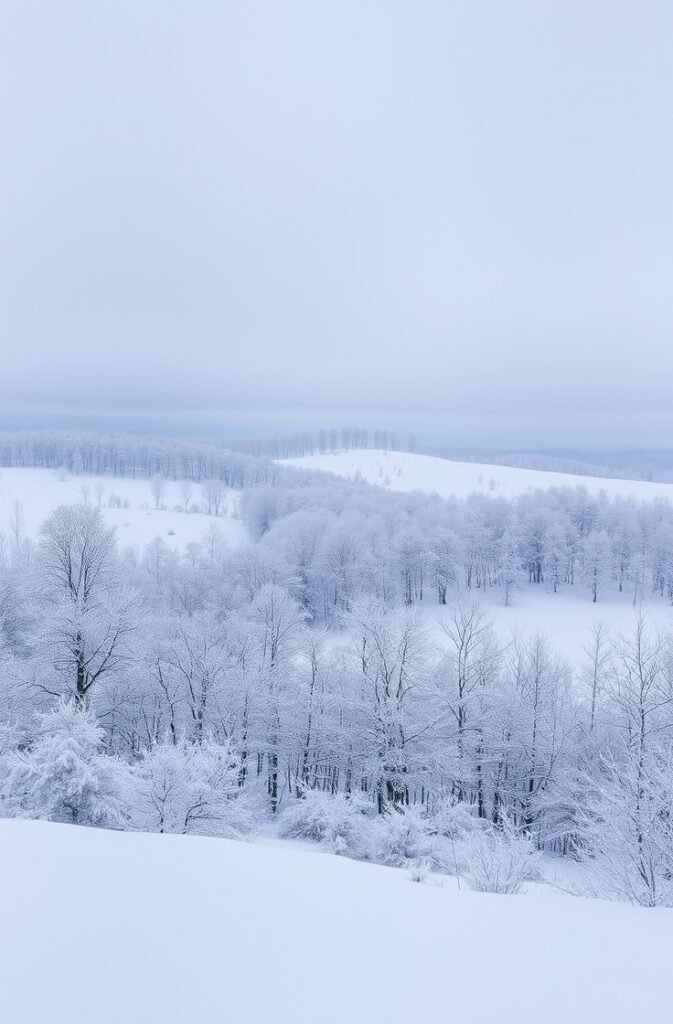
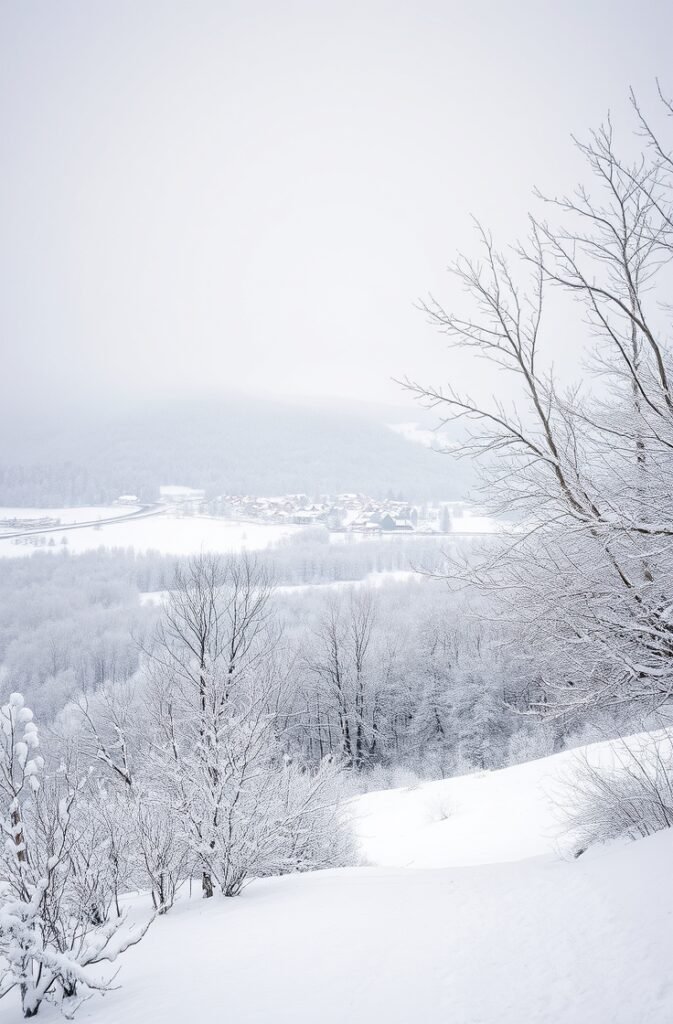

The Setting: A Snow-Covered Path
The snow-covered path depicted in the photograph serves as a fundamental element in capturing the essence of winter’s tranquility. This path, blanketed in a soft layer of undisturbed snow, not only represents a physical way forward but also symbolizes the journey and exploration inherent in the cold season. It invites viewers into a world where every step taken is both a discovery and an adventure, encouraging a deeper contemplation of one’s own path in life.
As one gazes upon the path, the pristine condition of the snow is evident, undisturbed by the hustle and bustle of daily life. The even surface suggests an invitation to walk, each footfall an interaction with the natural world. It offers a serene escape from populated environments, representing solitude and reflection amidst the beauty of winter. The tranquility provided by the untouched snow accentuates the allure of this snow-covered path, enhancing the aesthetic appeal of the landscape.



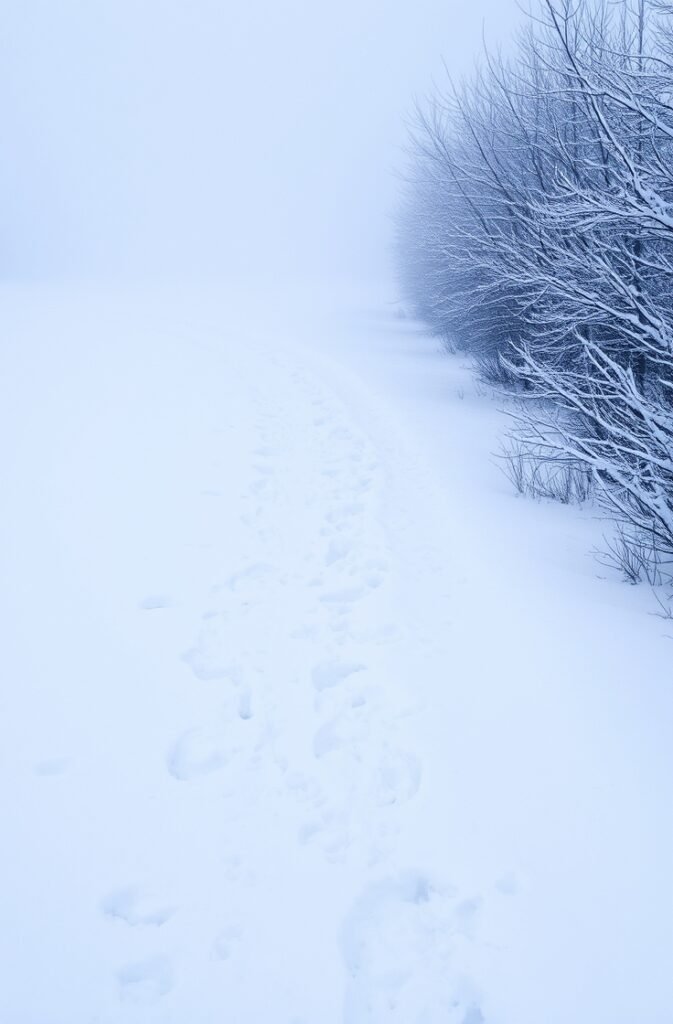
Interestingly, the faint footprints imprinted in the snow reveal the presence of previous adventurers who have traversed this route, weaving a narrative of connection between human beings and the winter backdrop. These marks, while slight, undeniably add layers of meaning, speaking to our innate desire for exploration and interaction with nature. They hint at stories untold and invite viewers to imagine their own journeys as they navigate the scene through their minds.
This path, enveloped by winter’s embrace, beckons individuals to step into the photograph, sparking a desire to experience the fresh air, the crunch beneath their boots, and the serene beauty of the landscape. The interplay between the soft snow and the mysterious footprints combines to create a compelling portrayal of adventure, solitude, and the ever-present call of nature.


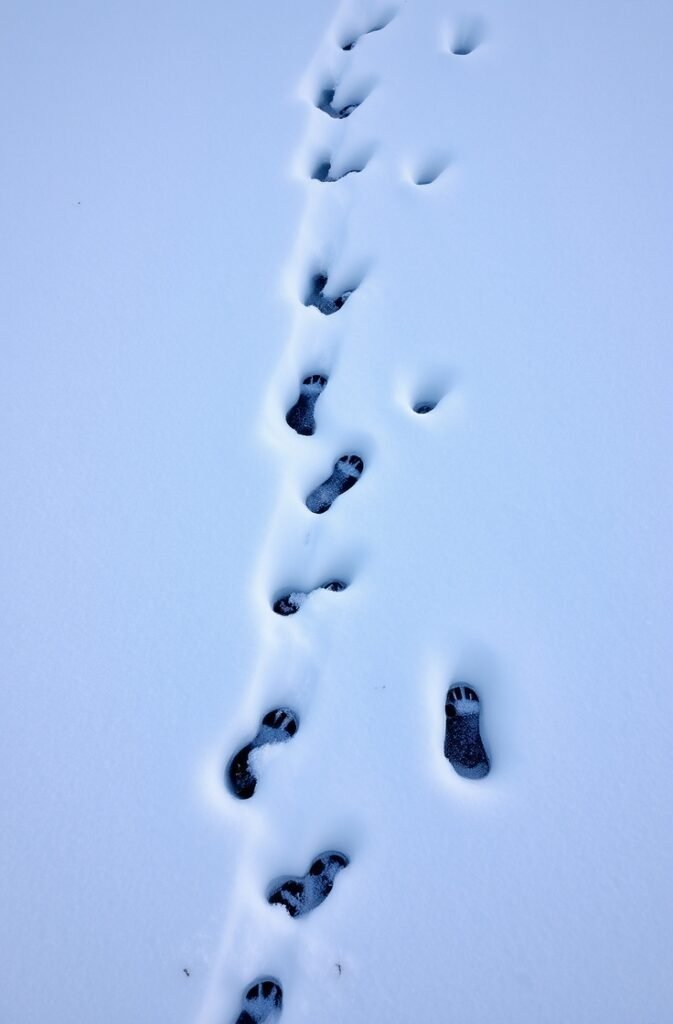
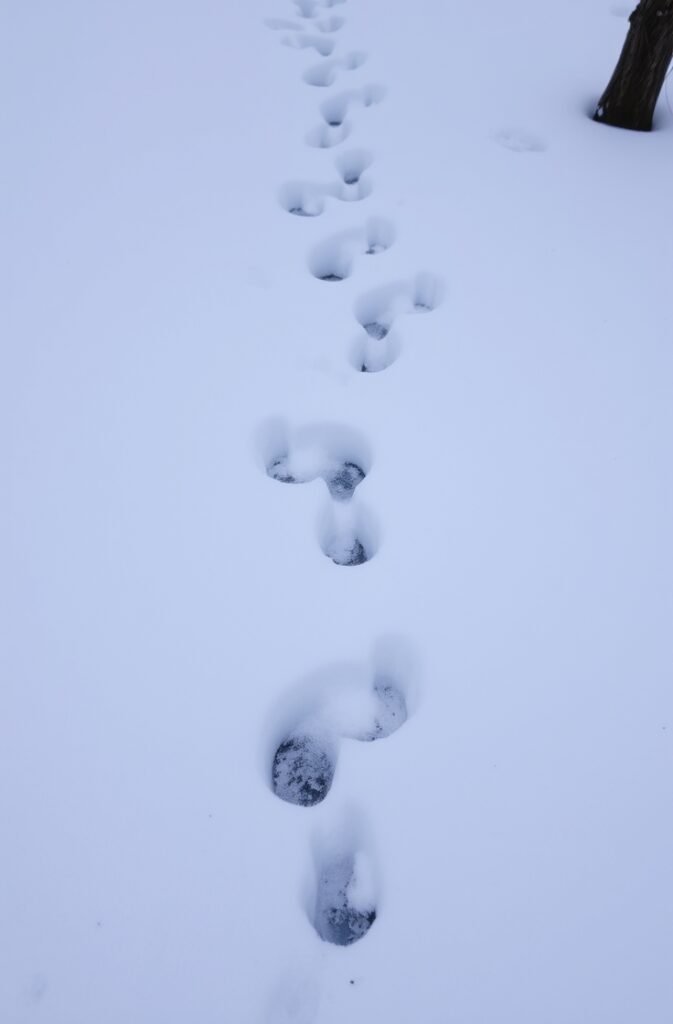
Nature’s Archway: Bare Trees Framing the Scene
As one ventures into a snow-covered landscape, the bare trees become prominent figures that lend a unique quality to the environment. These skeletal structures, stripped of their foliage, create a natural archway that frames the path ahead. This framing not only guides the viewer’s eye but also enhances the sense of immersion within the serene winter setting. Their elongated branches, often laden with fresh snowfall, play a significant role in shaping the overall composition of photographs, adding depth and character to the imagery.
The aesthetic interplay between the stark, barren branches of the trees and the soft, white snow creates a captivating visual contrast. The dark silhouettes of the trees stand in stark relief against the pristine whiteness of the snow-covered ground, drawing attention to their intricate shapes and textures. This juxtaposition highlights the gentle curves of the branches and the delicate patterns formed by the snow settling upon them. As sunlight filters through this natural archway, it casts gentle shadows, further enriching the visual narrative and evoking feelings of tranquility and solitude.
Moreover, the encircling nature of these trees instills a sense of enclosure and protection within the landscape. They act as guardians of the path, creating a safe passage through the otherwise expansive and potentially overwhelming vastness of the snowy terrain. This intimate connection with the environment can profoundly affect the viewer’s perception, inviting a deeper appreciation for the stark beauty of wintertime. The interplay between the bare trees and the snow not only transforms the overall aesthetic but also evokes a reflective mood that is emblematic of the season.

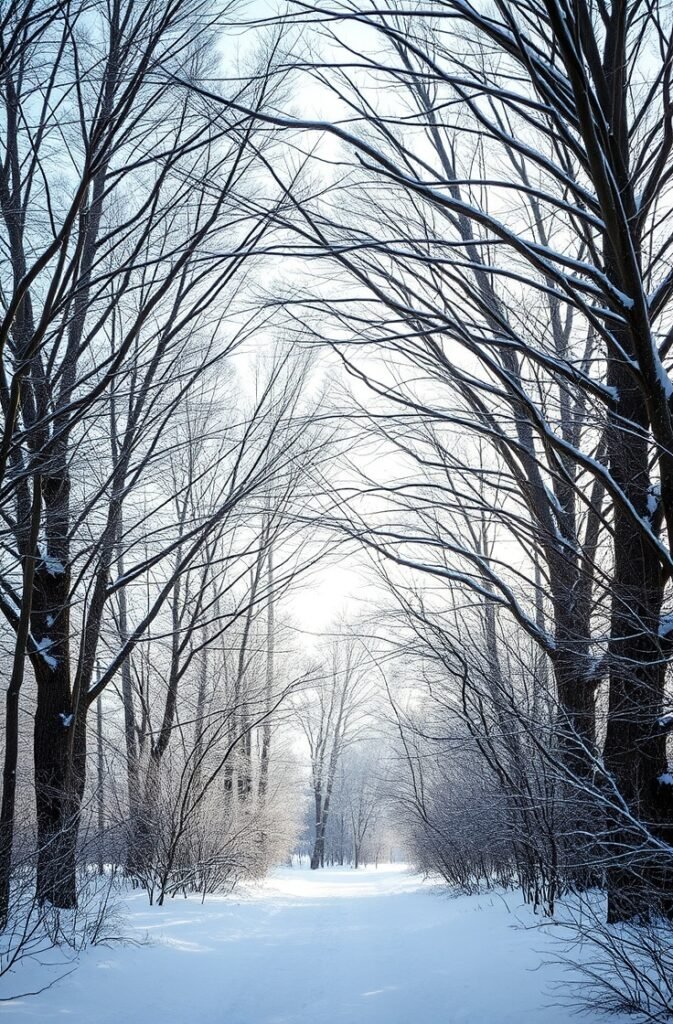
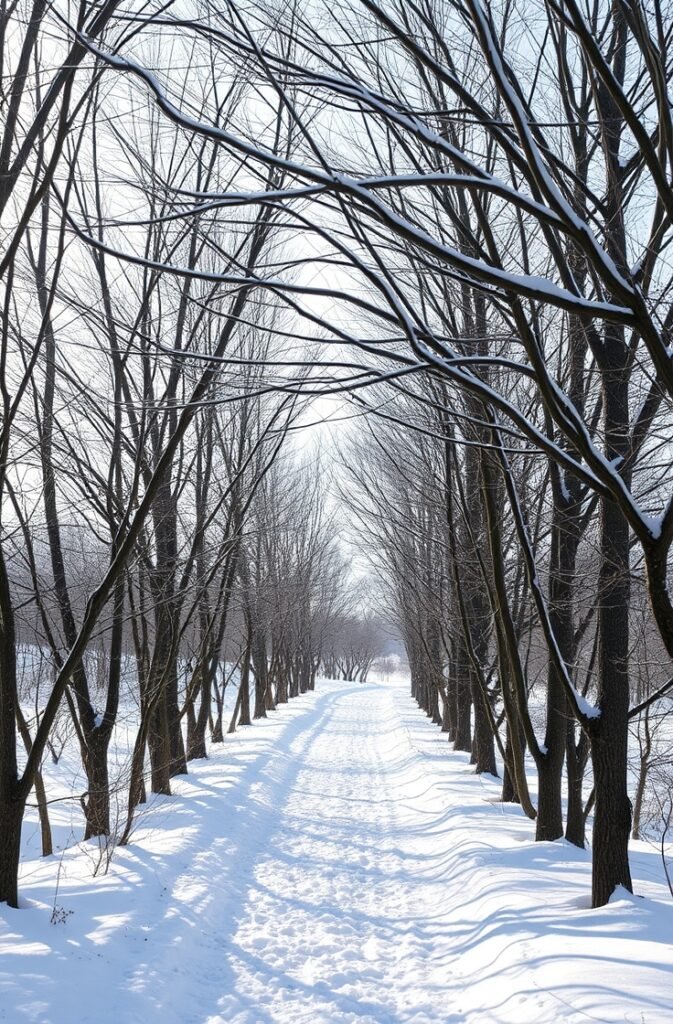
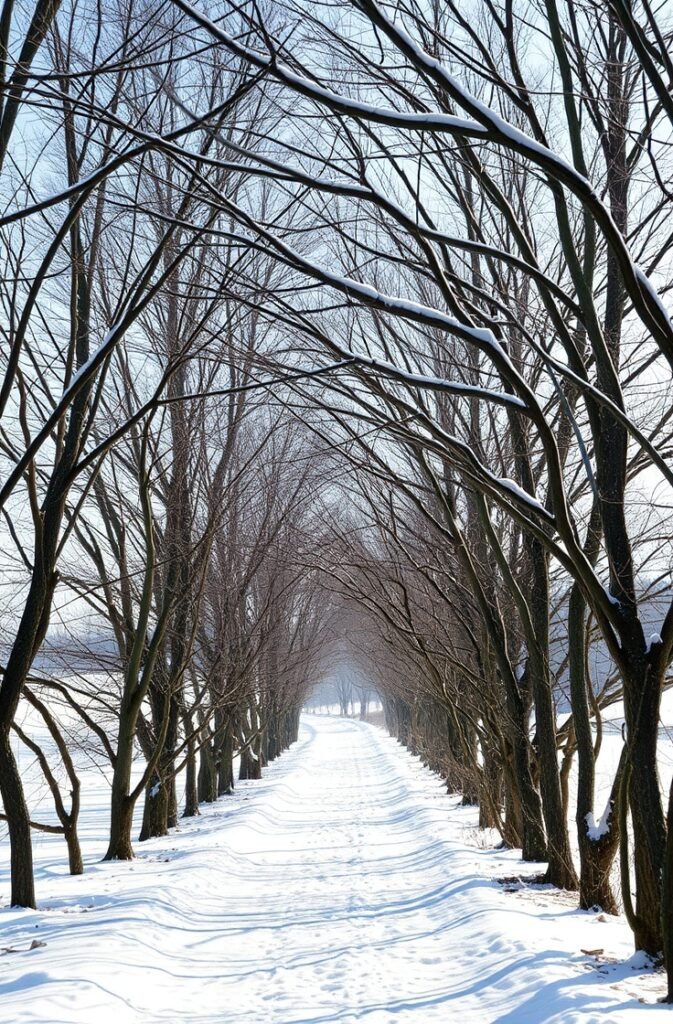
The Frozen Lake: A Mirror of Tranquility
In the heart of a snow-covered landscape, the frozen lake emerges as a stunning focal point that captures the essence of winter’s beauty. The stillness of its surface transforms the lake into a mirror, reflecting the surrounding trees and the magnificent sky above. This reflection not only serves as a visual centerpiece but also enhances the overall composition of any photograph taken within this serene environment. The glassy expanse of the lake invites viewers to pause and absorb the tranquility it exudes, allowing for a moment of respite in our often hectic lives.
As the snow blankets the ground, the frozen lake becomes an integral part of the harmonious winter scene, harmonizing with the snowy path that meanders through the landscape. Each element complements the other: the trees, adorned with ice crystals, stand tall along the bank, their branches silhouetted against the pale blue sky. This combination of stillness and serenity, embodied by the lake, creates a picturesque setting that evokes feelings of peace and reflection. It is a reminder of the quiet beauty that winter brings, inviting exploration and contemplation.
The lake’s frozen state symbolizes not only the chill of winter but also serves as a metaphor for the serene pause in nature that is often fleeting. In photographs, this scene emphasizes the perfection found in natural stillness, encouraging viewers to appreciate the subtleties of the landscape. The interplay between the frozen surface of the lake and the surrounding winter elements fosters a visual narrative where each feature coexists in perfect balance. This captivating scene, with the lake as its tranquil mirror, ultimately showcases the serene splendor of winter’s embrace.
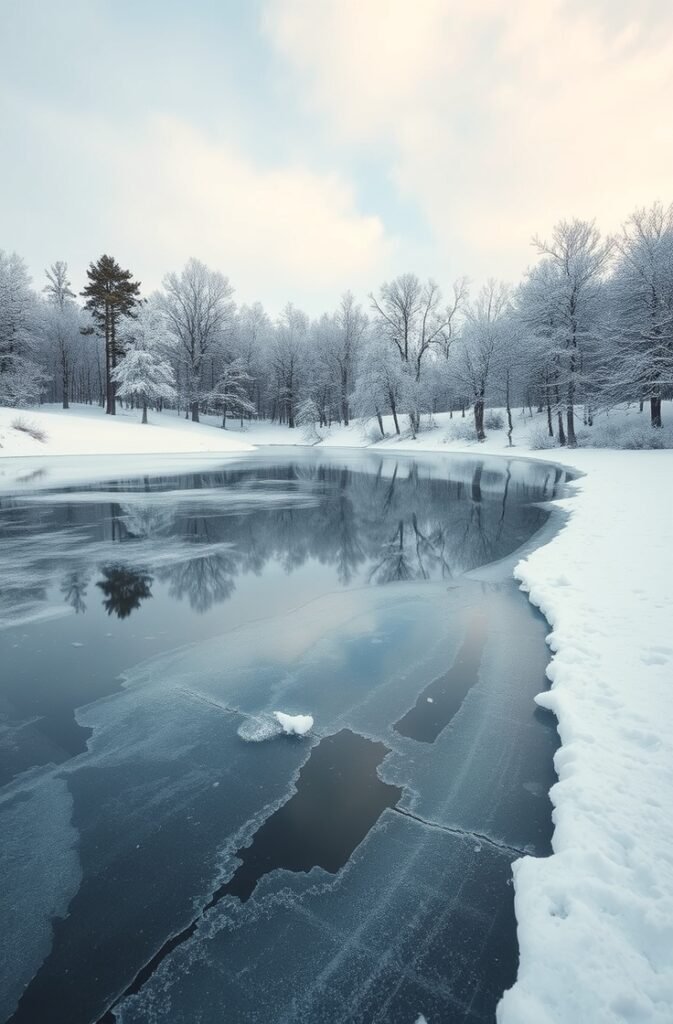


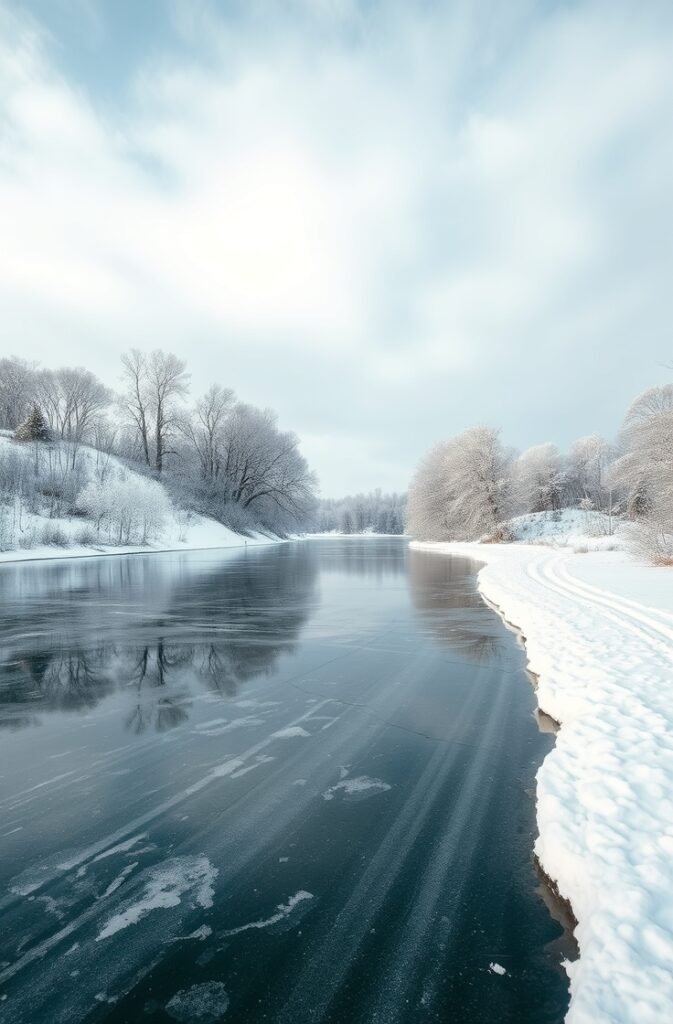
Skyward: The Warm Hues of Dawn or Dusk
The serene beauty of winter landscapes is often accentuated by the warm hues of orange and yellow that grace the sky during dawn or dusk. These colors create a powerful emotional impact, transforming a snow-covered scene into a breathtaking visual spectacle. The interplay of light and shadow across the frosty ground adds layers of depth to the photographs, enriching the viewer’s experience. The significance of light in photography cannot be overstated; it is the essence that breathes life into seemingly still moments.
During the early hours of morning or the transition into evening, the soft glow of the sun casts a golden sheen across the pristine snow. This gentle illumination not only enhances the beauty of the landscape but also evokes feelings of warmth and comfort. In winter, when landscapes can appear stark and cold, the warm hues signify hope and renewal. Sunrises symbolize new beginnings, promising the cleansing of darkness, while sunsets represent reflection and the acknowledgement of another day’s journey.
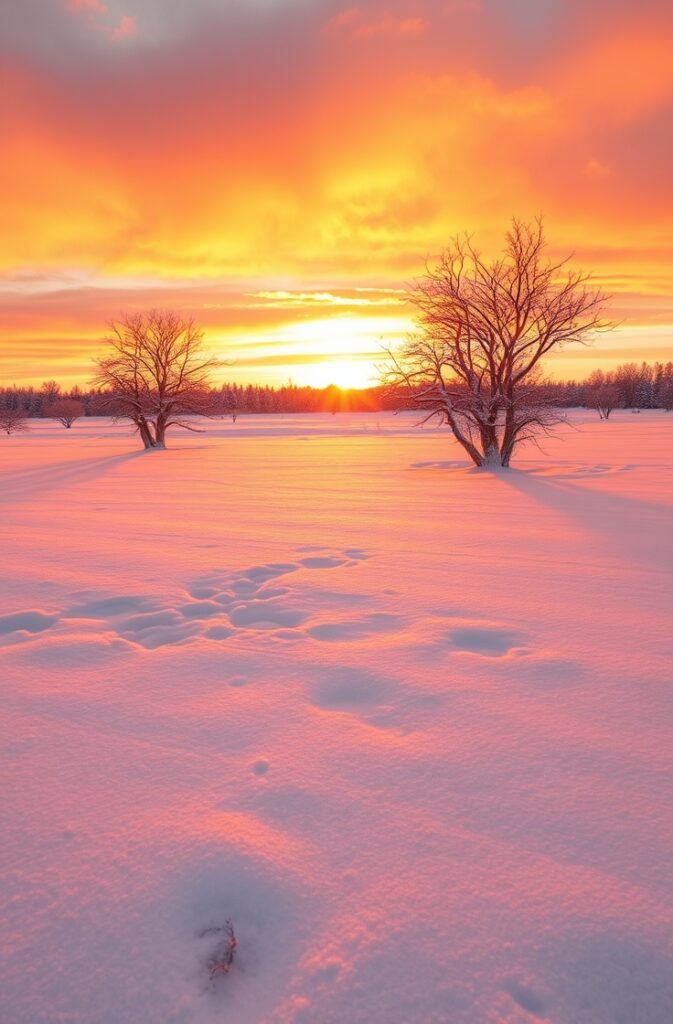
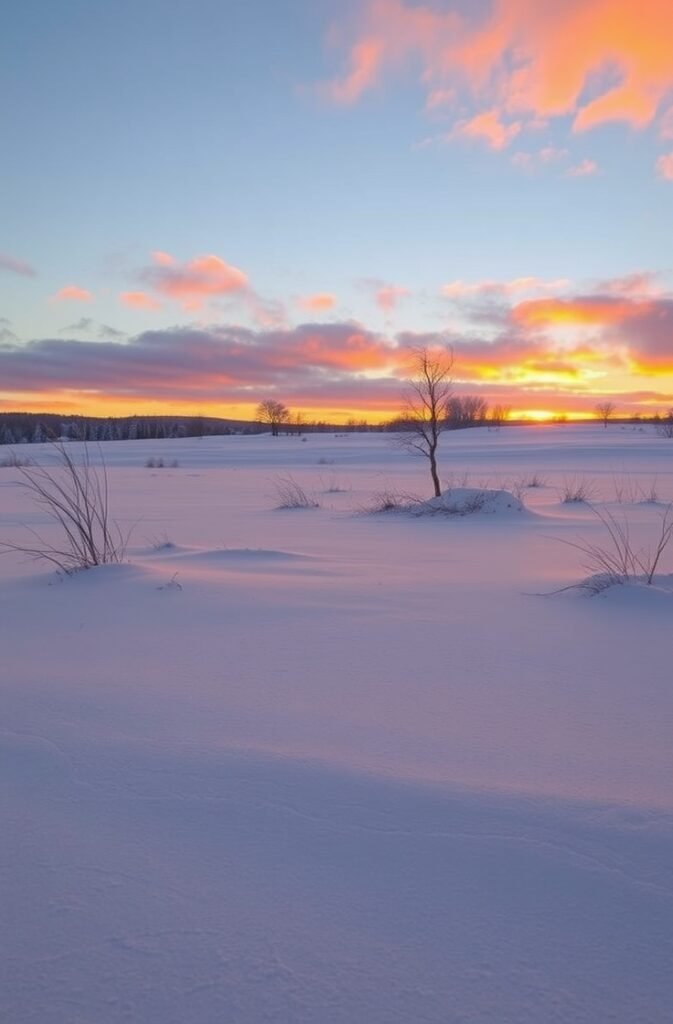
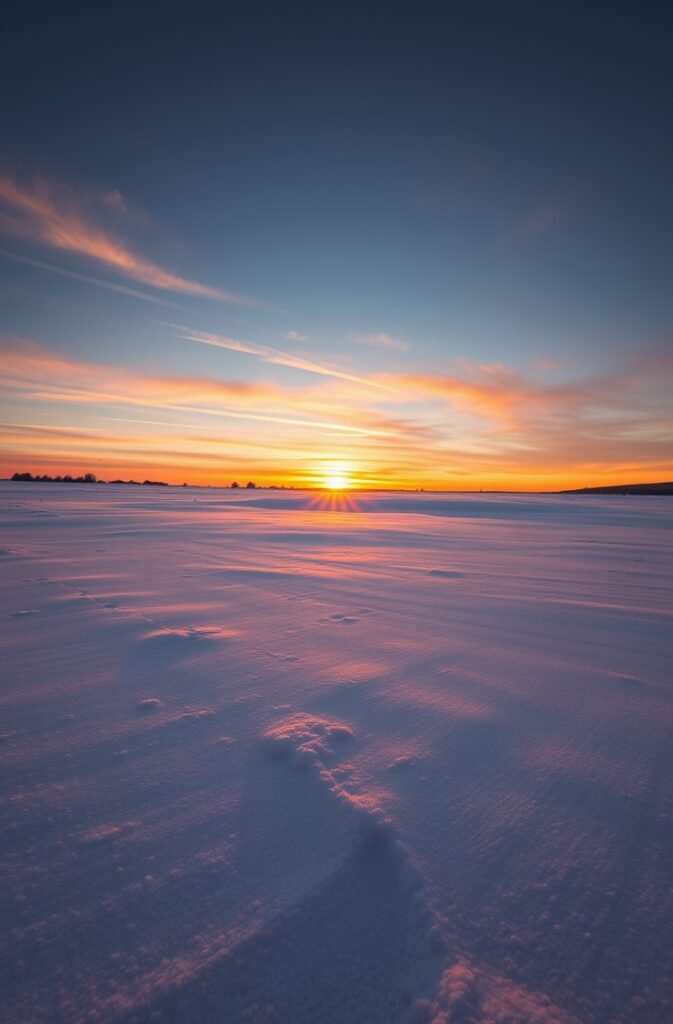

The emotional responses elicited by these colors are vital to understanding the allure of winter scenery. In photography, the strategic capture of these moments can stir profound feelings within the observer, drawing them into a connection with nature that transcends the visual boundaries of the image. The warm light transforming the white canvas of snow creates a harmonious balance, blending the chill of winter with the warm embrace of the sun’s rays. Such depictions invite the viewer to pause and reflect, perhaps reminding them of the enduring cycles of life and the beauty found in transitions.
In capturing these moments, photographers are not merely documenting a season but are also conveying a deeper narrative that resonates with themes of renewal, hope, and the instinctive human desire to find beauty in the world around us.

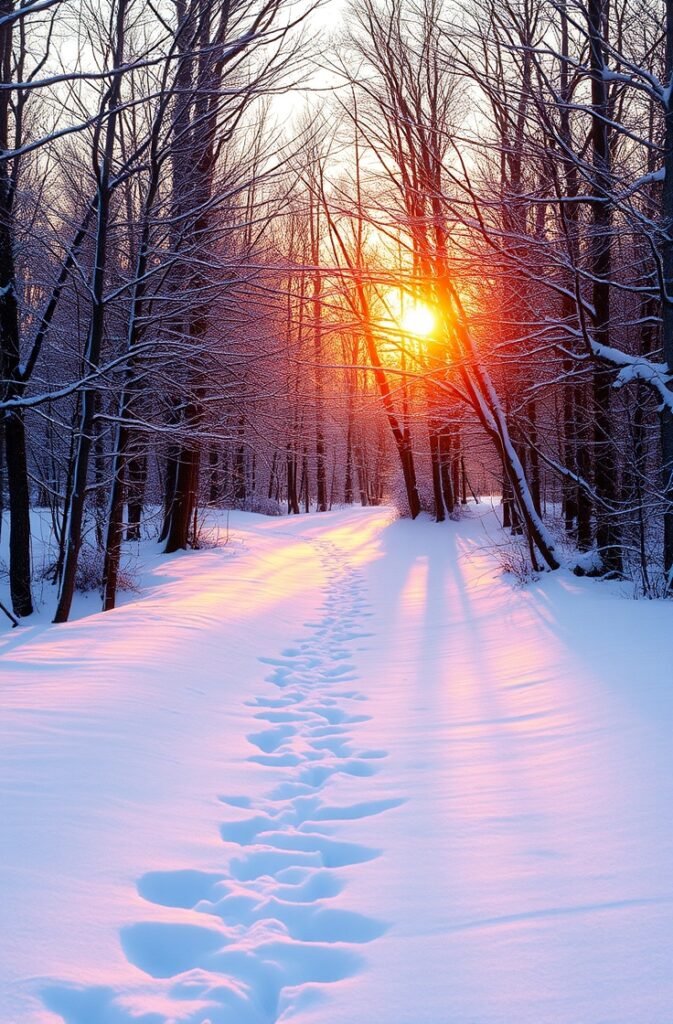


The Role of Color in Winter Photography
Winter photography presents a unique opportunity to explore the dynamic interplay of colors inherent in snow-covered landscapes. The cool tones of snow, often depicted in shades of white and blue, contrast strikingly with the warmer hues of the sky, which can range from soft pastels during dawn and dusk to vibrant oranges and reds on a clear day. This natural contrast not only enhances the visual appeal of winter scenes but also adds depth and emotion to the photographs.
Understanding color theory is essential for photographers aiming to capture the serenity and beauty of winter. The principle of complementary colors suggests that understanding the relationship between cool and warm tones can elevate the composition. When capturing a snowy landscape, integrating warm colors in the foreground or background can create focal points that draw the viewer’s eye and establish a sense of balance within the image.
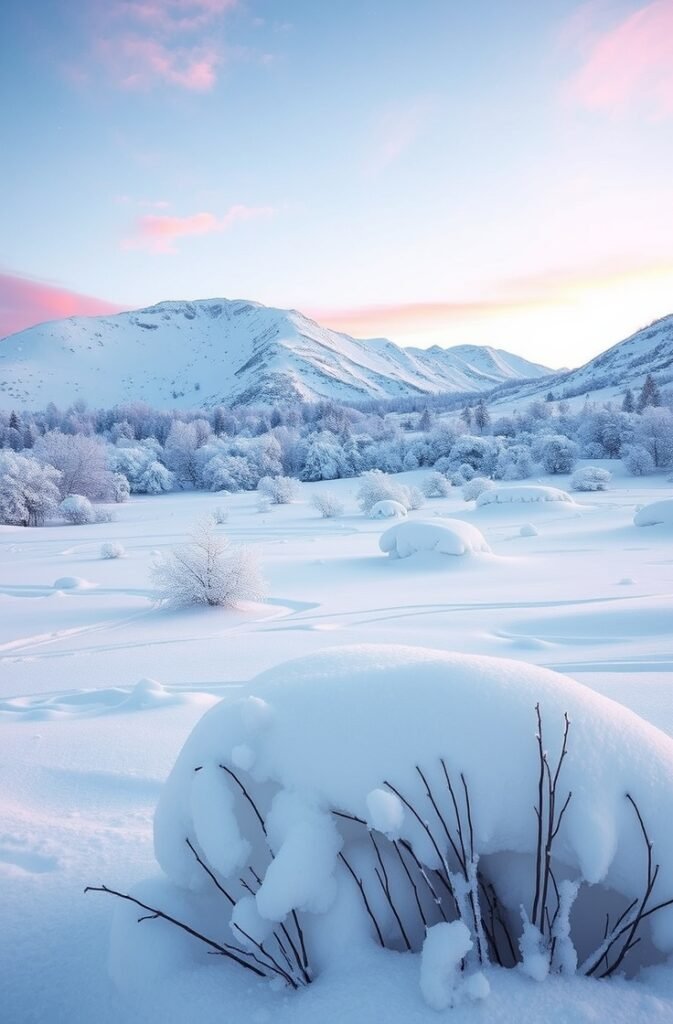
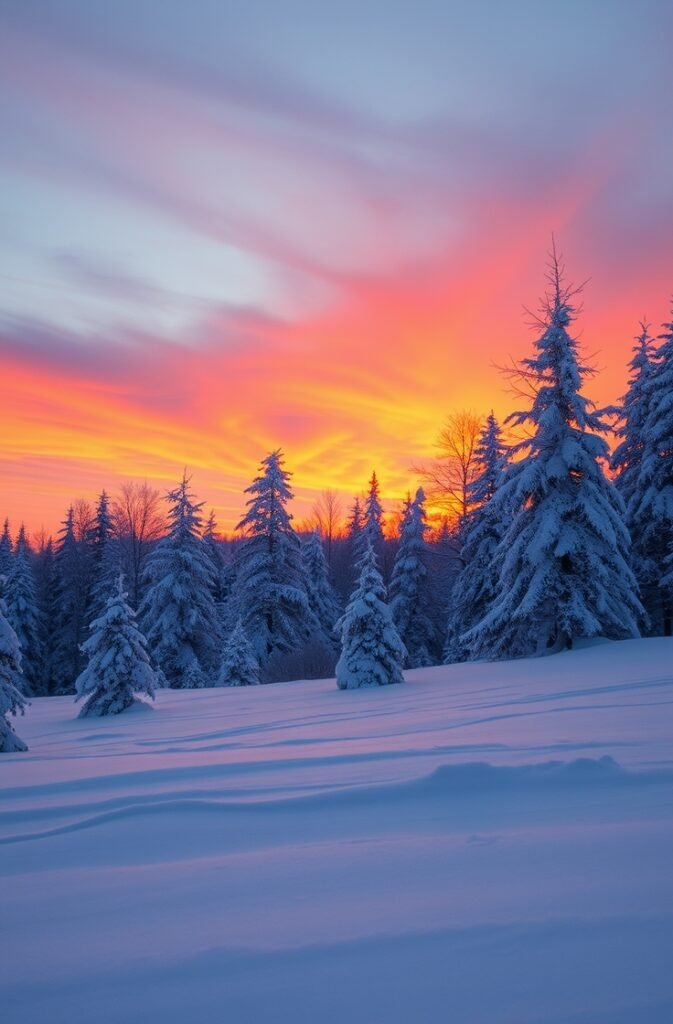
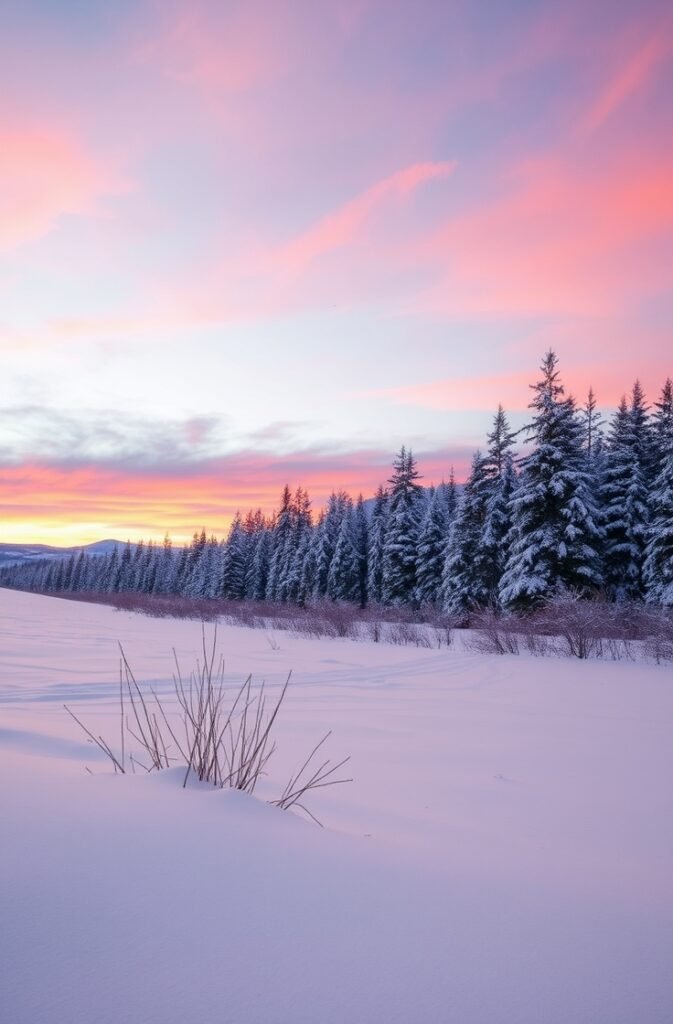
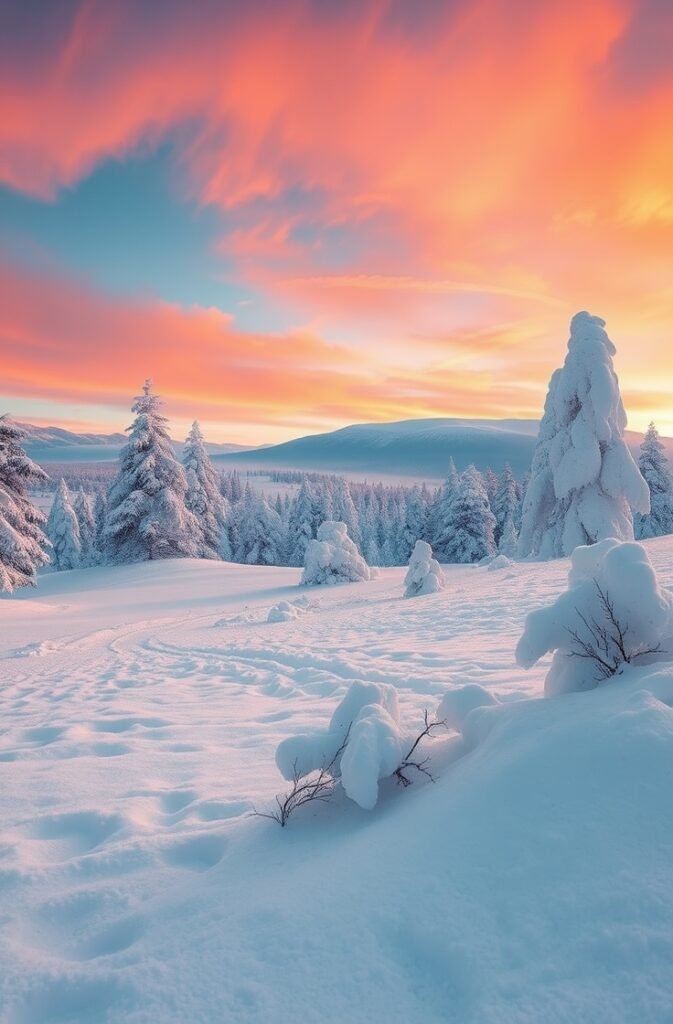
Moreover, the colors reflected in objects within the snowy landscape, such as a red barn or evergreen trees, serve to break the monochromatic palette of winter and add warmth. The strategic use of these elements allows photographers to create a compelling narrative, evoking feelings of warmth and comfort despite the cold backdrop. Furthermore, the early morning or late afternoon light can introduce varying temperatures of color, casting a golden hue across the snow and transforming an otherwise subdued scene into one of vibrancy and life.
Incorporating these color dynamics into winter photography not only enriches the aesthetic quality of the images but also serves to underscore the tranquil essence of winter. By being attuned to the layers of color present in a winter landscape, photographers can create striking compositions that invoke the serene beauty of the season, making every shot a reflection of the quiet peace that winter offers.

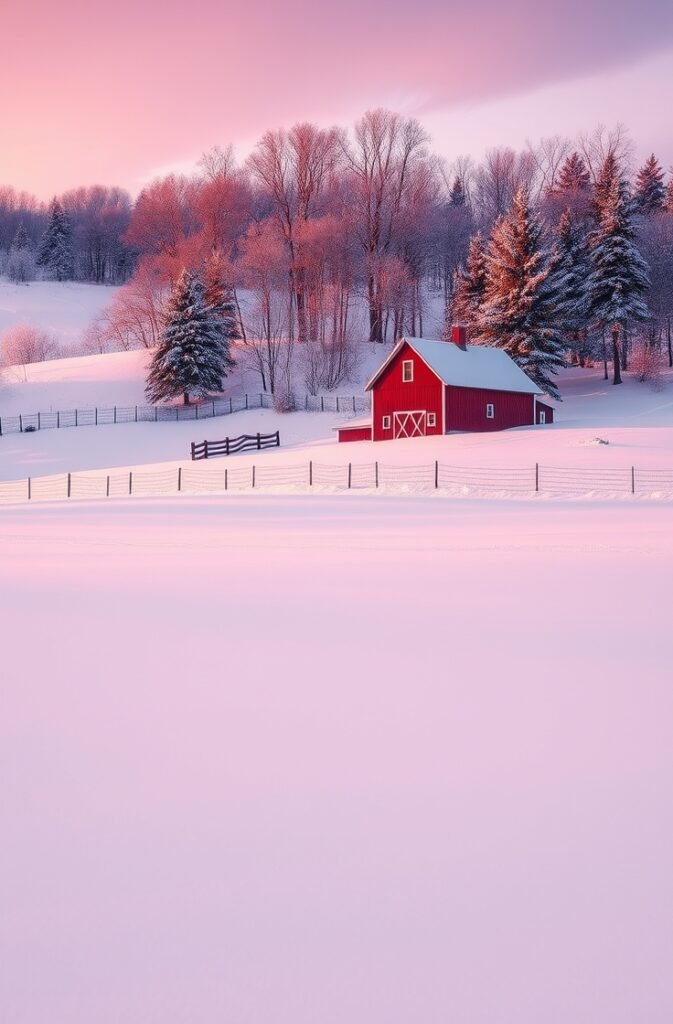


Capturing Footprints: The Human Element
Throughout the winter landscape, few images resonate as powerfully as a single set of footprints etched into the pristine snow. This visual motif serves as a poignant reminder of the human experience within the vastness of nature. The footprints are not merely marks left on the ground; they represent a journey—a tangible connection between the individual and the world around them. As the viewer contemplates this solitary path, they may find themselves questioning: Who walked here? What motivated them to venture into this serene, frosty expanse?
The presence of footprints can evoke a multitude of emotions, prompting reflections on solitude or companionship amid the stillness of the snow-covered terrain. This exploration of humanity in the landscape transforms what might otherwise be a simple winter scene into an intriguing narrative. Each step captured in the snow can serve as a metaphor for life’s journey, marked by personal experiences, challenges, and ultimately, connections with both people and nature. The viewer’s imagination is engaged, inviting interpretations that range from a solitary wanderer seeking tranquility to a couple enjoying a winter stroll, symbolizing togetherness and shared adventures.
In photography, elements such as these become powerful storytelling devices. They draw the observer into an intimate dialogue with the scene, creating an emotional pull that extends beyond the visual. The footprints guide one’s gaze towards the horizon, suggesting an ongoing journey, while simultaneously reminding us of the fleeting nature of our own experiences. Capturing these moments invites the viewer to pause and reflect, to ponder the narratives embedded in the landscape. Through the lens of winter photography, the footprints serve as an accessible entry point for deeper contemplation about human existence intertwined with the beauty and serenity of nature.

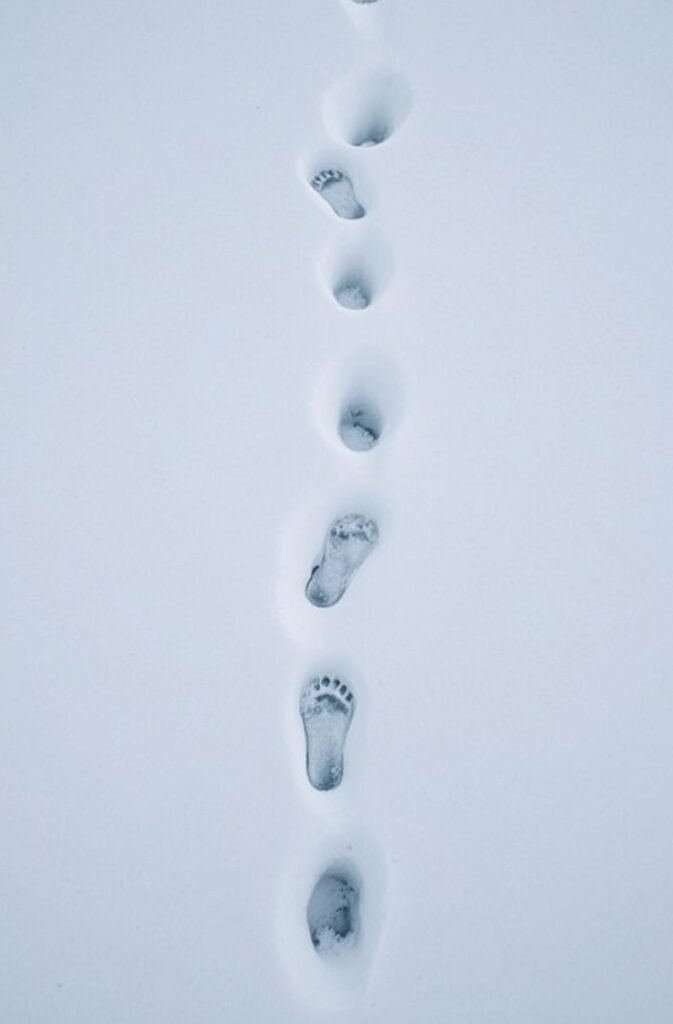

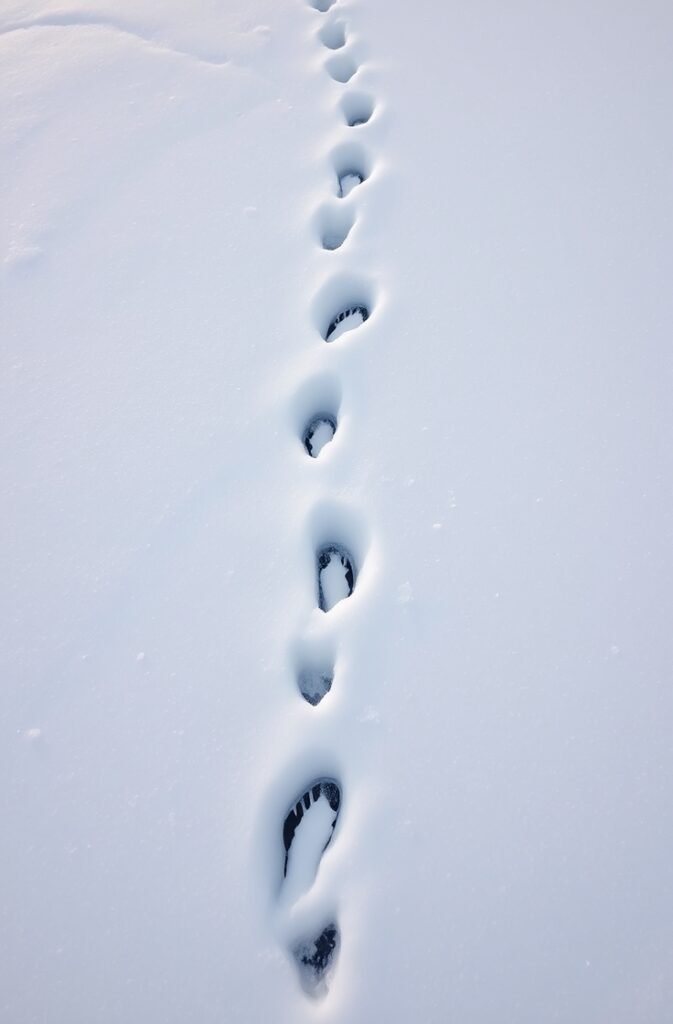
The Harmony of Cool and Warm Tones
In the realm of visual art, color harmony plays a crucial role in how a scene is perceived and experienced. The interplay of cool tones, such as blues and greens, along with warm tones, such as oranges and yellows, creates a dynamic visual balance. In winter landscapes, this dichotomy becomes particularly pronounced, as the crisp, cool hues typically dominate the scene, evoking feelings of tranquility and calm. Yet, when warm tones are introduced—whether through the soft glow of sunlight filtering through the trees or the warmth of a cozy cabin chiming in the distance—the emotional response deepens, creating an inviting atmosphere.
Cool tones in winter imagery often symbolize serenity and introspection. The cool blues of a frozen lake, the subtle greys of a snow-laden sky, and the muted greens of evergreens in a winter setting coalesce to convey a sense of stillness. These hues can instill a perception of quiet, allowing the viewer to reflect and connect with the natural world in a profound way. In contrast, the warm tones that emerge amid the coolness serve to evoke emotions associated with comfort and peace. When viewed in tandem, these colors elevate the overall atmosphere of the artwork, enhancing its emotional resonance.
The strategic use of color in winter landscapes not only emphasizes the beauty of the scenery but also encourages an emotional connection with the viewer. This interplay facilitates a deeper appreciation of nature’s subtleties, encouraging mindfulness and serenity. As artists deftly balance cool and warm tones, they guide the audience’s gaze and feelings, fostering an immersive experience that captures the essence of winter. Ultimately, the harmony of these contrasting colors transforms a simple landscape into a captivating artwork that evokes a profound sense of peace and reflection.
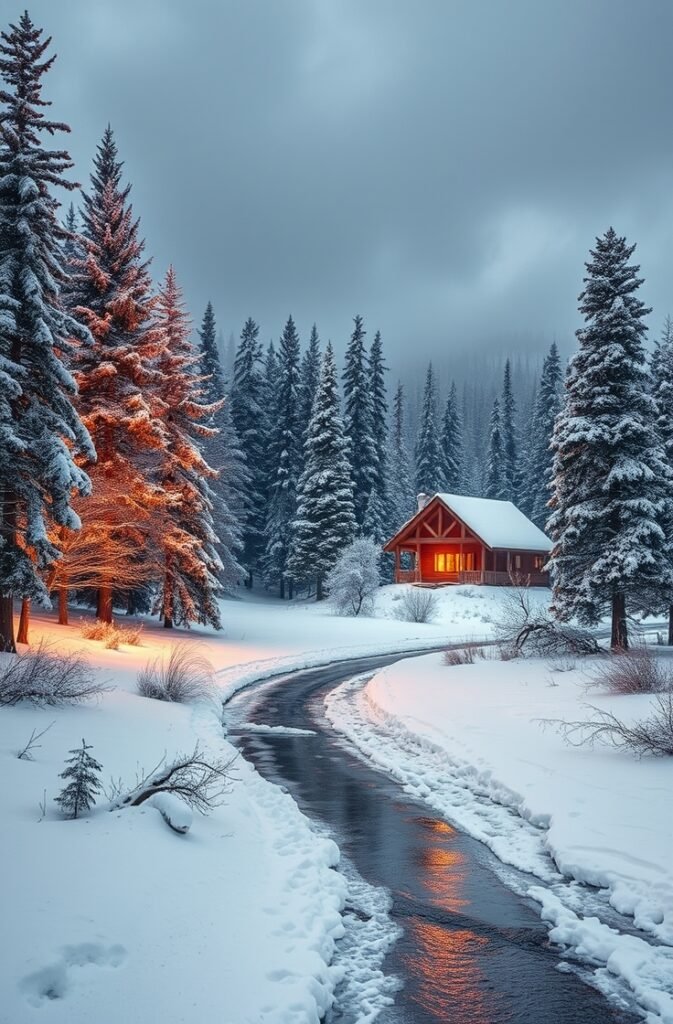
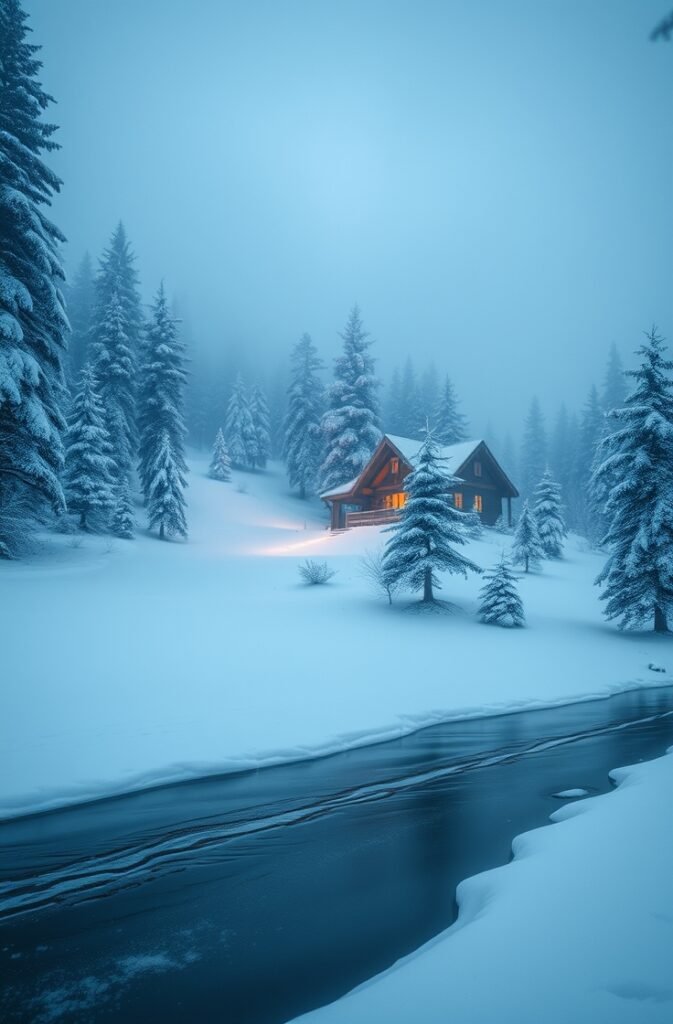

Conclusion: Embracing the Serenity of Winter
The enduring allure of winter landscapes can be found in their serene beauty and tranquil atmosphere. Throughout this exploration of snowy terrains, the key themes have emphasized the profound impact that winter scenes can have on our senses and emotions. The stark contrast between a snow-covered expanse and the vibrant colors of other seasons invites a moment of reflection and appreciation for nature’s artistic capabilities. From glistening icicles to the soft hush of freshly fallen snow, each element contributes to a harmonious environment that is both calming and rejuvenating.
In embracing the serenity of winter, individuals are encouraged to immerse themselves in the quiet moments that this season uniquely offers. Whether it is through solitary walks in snowy woods or joyful gatherings around a fireplace, the essence of winter can facilitate introspection and connection. These moments encourage us to slow down, breathe deeply, and appreciate the beauty surrounding us, instilling a sense of peace that transcends the busyness of daily life.
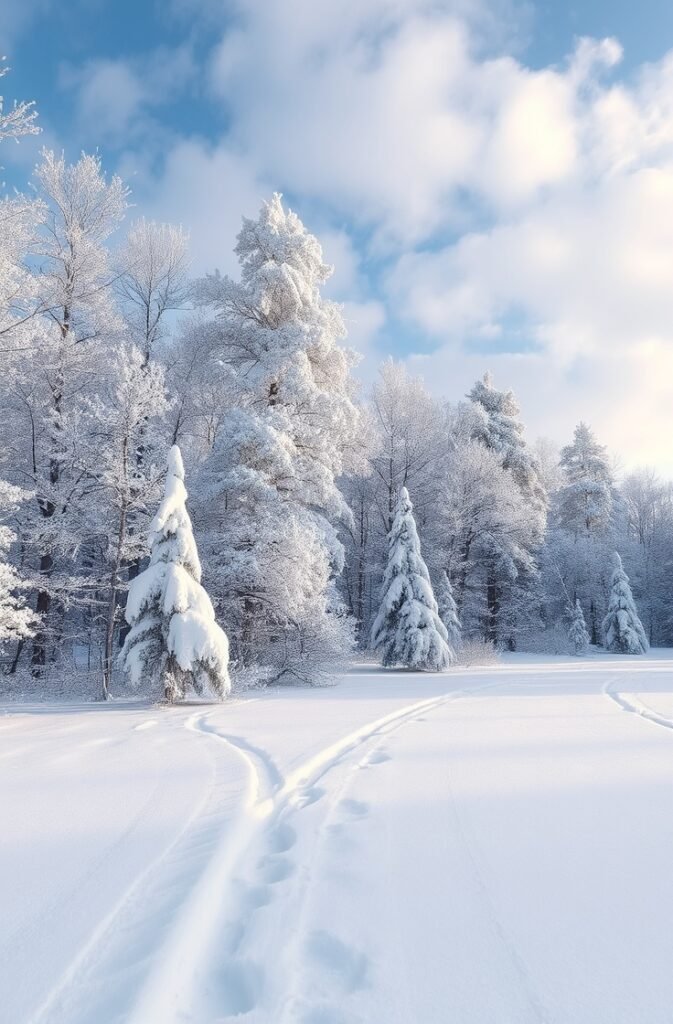

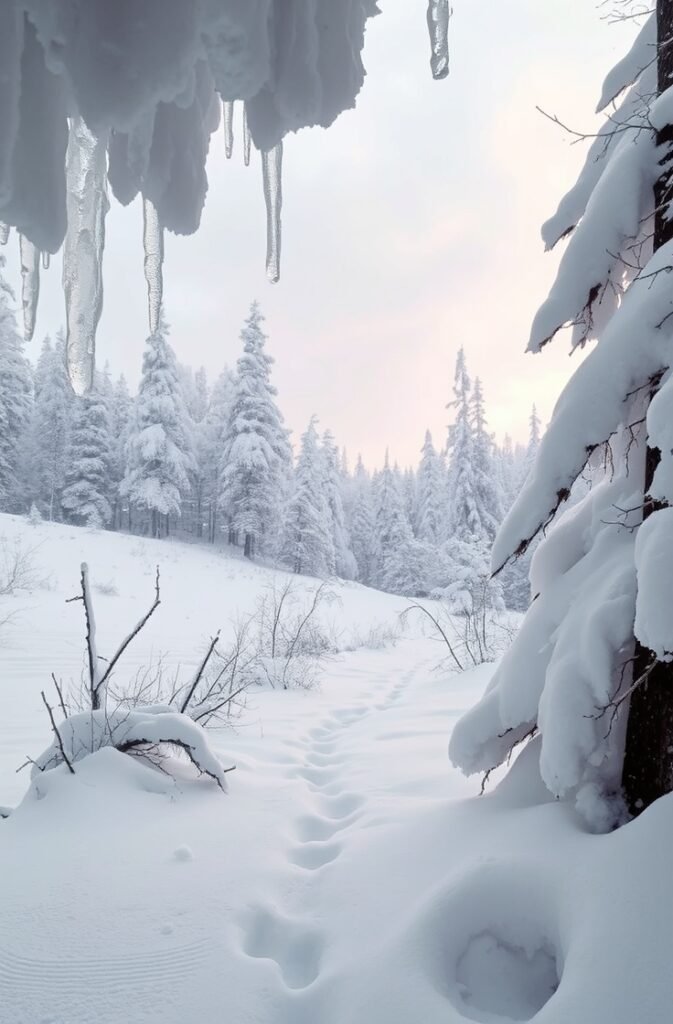
RELATED POSTS
View all

